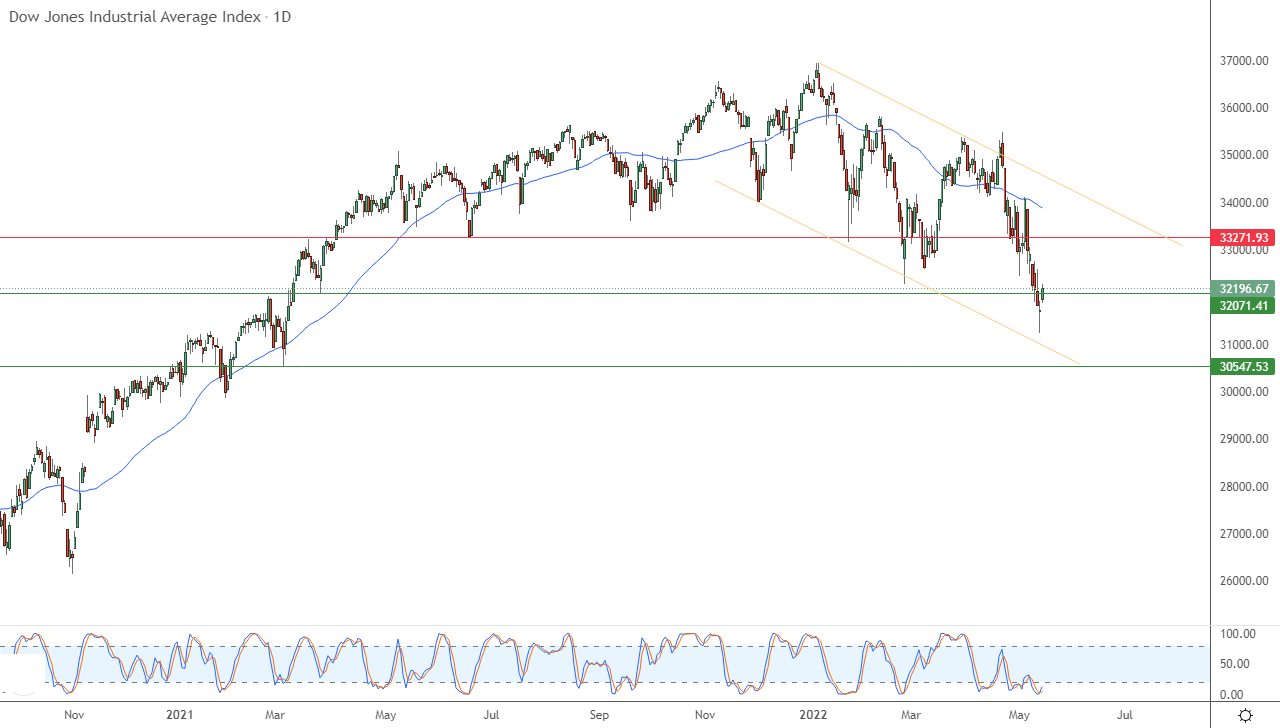The Dow Jones Industrial Average rose during its recent trading at the intraday levels, to break a series of losses that continued for six consecutive days. It achieved gains in its last sessions, by 1.47%, to gain about 466.36 points and settled at the end of trading at the level of 32,196.67, after its decline in Thursday’s trading by amounting to -0.33%. During the past week, the index recorded losses by -2.14%, thus recording a weekly series of losses that continued for seven consecutive weeks, and it is the longest series of losses since July 2001.
The data showed consumer prices rose 8.3% year-on-year in April, down slightly from the 8.5% annual rate in March, but high enough to worry investors. Core CPI, which excludes food and energy due to their volatility, increased 6.2% year over year.
Meanwhile, producer prices jumped 11% year-on-year in April, with the core PPI rising 8.8%, the Bureau of Labor Statistics said.
Because of concerns about how the US economy will be affected by the ongoing monetary tightening in an attempt to curb price hikes, inflation data pressured almost all sectors. Real estate saw the biggest drop during the week, with the sector index down 3.9%, followed by a 3.6% drop in financials, technology declining 3.5%, and consumer appreciation tumbling 3.4%. Only one sector managed to avoid losses this week and that was the basic consumer goods sector which gained 0.3%.
The economic data expected this week includes retail sales, building permits and existing home sales for April.
Technically, the index is trying with its recent rise to compensate for part of what it incurred from previous losses. At the same time, it is trying to dispose of some of its clear oversoldness with the relative strength indicators, especially with the emergence of a positive crossover in them. This came in light of its trading within the range of a descending corrective price channel that limits its previous trading in the short term. It is shown in the attached chart for a (daily) period, with the negative pressure continuing to trade below the simple moving average for the previous 50 days.
Therefore, our expectations suggest a return to the index's decline during its upcoming trading, especially in the event of confirming its breach of the support level 32,071.40, to target the support level 30,547.50.

